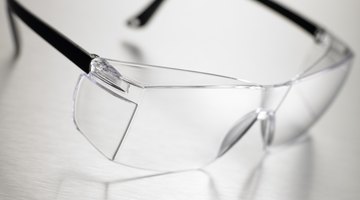How to Remove Rust Using Washing Soda -- Electrolytic Rust Removal
If you don't take care of your tools, you'll find that over time, the metal will begin to rust. If you don't take care of the rust, it will continue to grow and eventually, you won't be able to use the tool anymore. Learn how to remove the rust with electricity. It's inexpensive and environmentally friendly.

Things You Will Need
- Protective eyewear
- Rubber gloves
- Battery charger
- Washing soda
When all your tools are cleaned up, take care of them so they'll serve you well for years and years.
-
Be safe. Put on protective eyewear and rubber gloves. Be sure you are in a well-ventilated area, preferably outside, as flammable hydrogen gas will be released. Keep away from cigarettes, open flames or any ignition source.
-
Pour enough water into a plastic container to completely cover the item to be cleaned. Add about a tablespoonful of washing powder, sodium carbonate, per gallon of water and stir until the powder is completely dissolved. Washing powder is stronger and more effective than baking soda, or sodium bicarbonate, which may alternately be used. Purchase washing powder anywhere pool supplies are sold.
-
Place a piece of scrap steel, such as a piece of rebar, into the container. This will be the anode, which will eventually erode in the process.
-
Unplug the battery charger. NEVER leave it plugged in when connecting the cables.
-
Connect the red/positive cable to the anode. Make sure the cable clamp does not touch the water. Connect the black/negative cable to the item to be cleaned and put it in the solution. Keep the item several inches away from the anode. It is fine to have the black/negative clamp in the water.
-
Turn on the battery charger. Small bubbles will appear at the anode and the item to be cleaned, which means it is working.
-
Turn the charger off periodically and check on the progress of the cleaning. The length of time it takes will depend on the size of the item, the current used and how badly the item is rusted.
-
Rinse the item under running water and brush the loose scale and dark sludge off of it. The metal will have a gray color. If not, put it back in the solution and continue the process until all traces of rust are gone.
-
Keep tools rust-free by coating them with oil, wax or a commercial protectant, and storing them away from moisture.
Warning
Make sure the battery charger is unplugged whenever you hook up or move the cables. Always keep the red/positive cable out of the water.
References
Warnings
- Make sure the battery charger is unplugged whenever you hook up or move the cables. Always keep the red/positive cable out of the water.
Writer Bio
This article was written by the CareerTrend team, copy edited and fact checked through a multi-point auditing system, in efforts to ensure our readers only receive the best information. To submit your questions or ideas, or to simply learn more about CareerTrend, contact us [here](http://careertrend.com/about-us).
Photo Credits
- BananaStock/BananaStock/Getty Images
- BananaStock/BananaStock/Getty Images
More Articles


